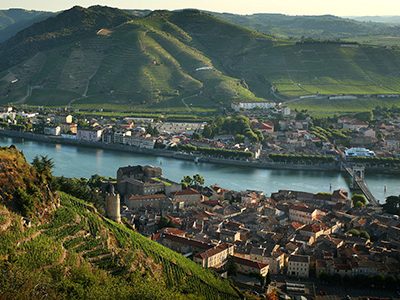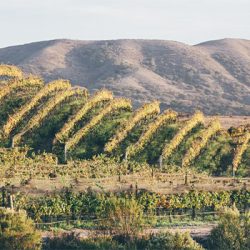Black Pigs & Wild Asparagus
Foraging in Portugal’s Alentejo
photos by Tiago Caravana
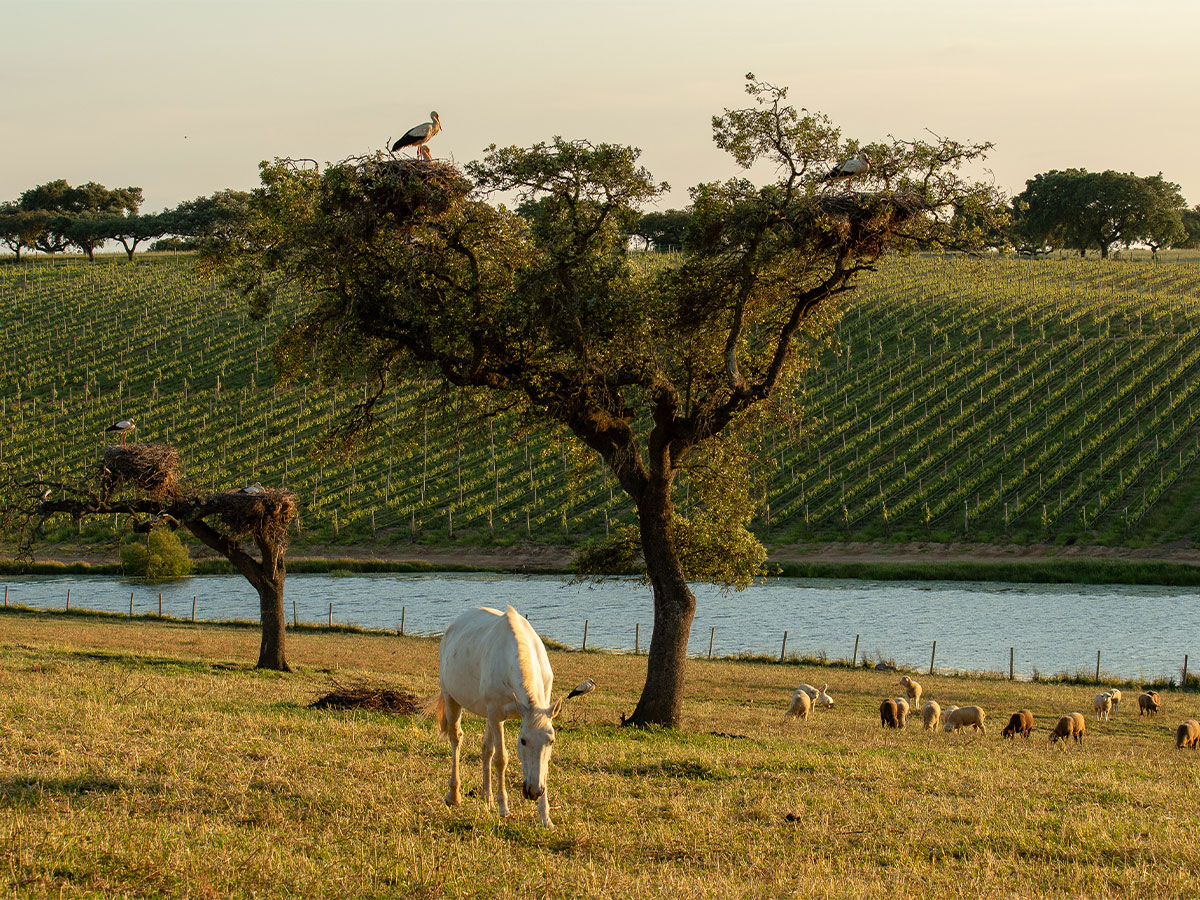

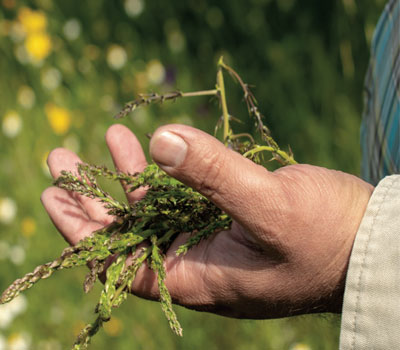

I didn’t feel the poverty as I crisscrossed the wideopen, sunbaked landscape from southeast of Lisbon to the Algarve, the country’s southern coastal zone. Since 1974, after Portugal’s shift from fascism to democracy and its integration into the European Union, the state has provided free education and healthcare. Additionally, just beyond São Lourenço do Barrocal’s meticulously renovated 19th-century stone cottages, stables and barns, and forming part of the border with Spain, the damming of the Guadiana River in 2002 had created Lake Alqueva, Europe’s largest artificial body of water. Today, cork, wine, olives and Alqueva-irrigated crops, along with a budding tourism industry, all contribute to an expanding economy. Plus, like Vintém, cooks here have a tradition of foraging for part of their diet, as well as planting vegetable patches, and keeping a few chickens, for eggs, and, perhaps, a black Alentejano pig.
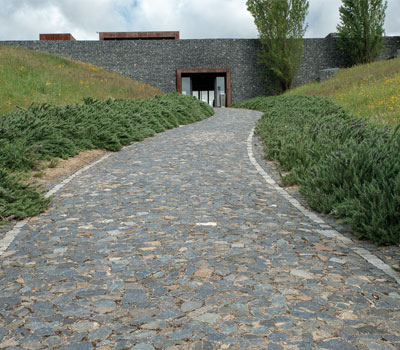

When lunch arrived, in one of Barrocal’s whitewashed, ivy-covered courtyards, I could see how the chef’s food reflected the constant flux of nature. Farm-fresh eggs came two ways: one softly scrambled with the grassy asparagus stalks he had just picked; the other with slices of a yellowish-brown wild tuber the chef likened to truffles, but which reminded me of marble-sized sunchokes. The communal plates also contained tangy partridge escabeche—I later saw a rabbit variation; both came from game hunted in Alentejo’s olive and cork groves. Pork fat–rich migas (a kind of bread dumpling) came flavored with the aromatic pennyroyal we’d picked that morning, but the migas, like the eggs, would evolve with the seasons to include sun-ripened tomatoes from Barrocal’s extensive (Alqueva-watered) vegetable garden in summer, then, in autumn, a variety of wild mushrooms.
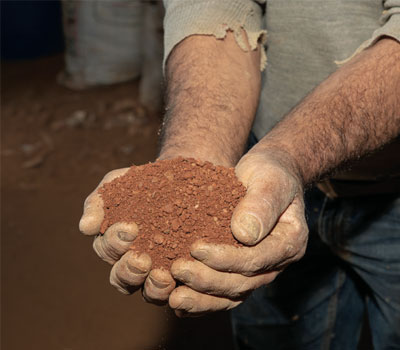

Vintém’s menu was inspired by Alentejo’s historical deprivation but it wasn’t stuck there. So, if his dried-fava-bean salad hewed to peasant tradition with slices of lightly spicy chouriço sausage, it was also garnished with red-through-and-through strawberries, their juices mixed with the estate’s olive oil to create a sweet-tart dressing.
Using Evora, a UNESCO World Heritage city, as a home base for my forays, I had been introduced to the comforting conformity of Alentejo’s rustic cuisine at Quinta do Quetzal in Vidigueira, southwest of Barrocal. The sleek winery was created by Dutch art collectors, so the property is landscaped with native specimen gardens, and a gallery hosts a revolving slate of contemporary exhibitions. But hunger propelled me to the estate’s light-flooded dining room with sweeping views of red-soil vineyards. At lunch, I learned that although, on average, red wine accounts for more than 75 percent of Alentejo’s wine production, here it drops to less than 50 percent. That’s because in spite of being Alentejo’s most southerly wine subregion, Vidigueira has the mildest climate: While temperatures can climb into the 90s during the day, they can fall more than 35 degrees overnight, thanks to the cooling winds the hills channel in from the Atlantic, which is why the region can grow top-quality white grapes like antão vaz, the local star. And while Alentejo wines are mainly blends, the native antão vaz often appears on its own, offering wines with strong minerality and intense freshness.
As a cavalcade of terra-cotta plates and casseroles landed on my table, the obvious hit me. The red vineyards, the hand-painted earthenware (I had passed through São Pedro do Corval, one of Europe’s major pottery towns, on the way to Quetzal), the clay floor tiles, curved roof tiles and talhas, the traditional clay vessels some vintners still use here: Alentejo’s red soil figures in so many of its traditions.
Quetzal initiated me into Alentejo’s soulful cuisine and its sources. The same buttery, curry-inflected meat turnovers that show the lasting influence of Portugal’s spice hunting in the East Indies cropped up on menus throughout the region. So did peixinhos da horta (“little fish from the garden”). Portugal’s southern hinterland is far from the coast, so local cooks swapped out seafood for green beans, coating the vegetables in batter and deep-frying them. (Alentejano chefs will tell you the Japanese learned this cooking style from Portuguese traders.)


I also sampled possibly the region’s best example of rich, crumbly, smoked farinheira sausage, here wrapped, pork-on-pork, in presunto do porco preto, the region’s silky cured ham. Farinheira’s particularity is that it’s filled with a mixture of raw flour, paprika, chile paste and pork fat, and the apocryphal story suggests that it was originally a creation of Alentejo Jews who wished to avoid undue attention by preparing a kosher sausage that nevertheless looked like the usual chouriço. Did they use schmaltz instead?
In the evenings after visits in the countryside, I dined in the region’s capital, Evora, home to a remarkable range of outstanding restaurants with excellent wine lists given that it’s a city of only 60,000. For me, Enoteca Cartuxa was a standout. The modern, red-and blond-wood space is operated by Evora’s Cartuxa winery, so the house’s crisp whites and fresh, fruity reds are on offer alongside a menu that’s an evolution and continuation of Alentejo’s culinary arts. It was a great spot to sample the region’s nutty sheep and goat cheeses and hand-sliced presunto do porco preto. Spain’s black-hooved pata negra pigs get most of the attention, but Alentejo’s forest-fed pigs also gorge on herbs, fallen fruits and acorns.
Like all Portuguese, Alentejanos love their bacalhau (salt cod). It’s a national passion that dates back to the 15th century, when Portuguese sailors crossed the ocean to fish for cod on the Grand Banks, then preserved their catch in salt for the voyage home. Enoteca Cartuxa caters to this centuries-long bacalhau mania with multiple preparations: in açorda—one of Alentejo’s most essential dishes—a humble soup of pennyroyal, garlic, olive oil and water thickened with stale bread; tossed with matchstick potatoes and fried egg; in a velvety chickpea soup with poached egg and spinach; or as an entrée with chickpea puree, pickled red onion and parsley-infused olive oil.
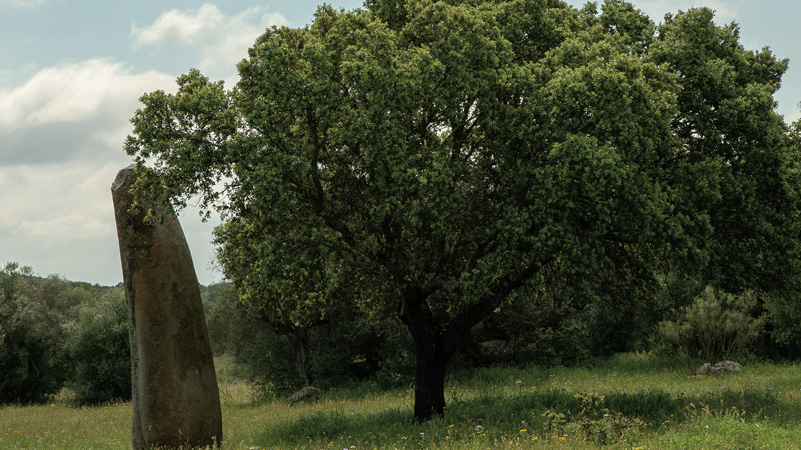

To end an already hearty meal, Enoteca Cartuxa served an updated version of toucinho do céu—literally translated as “bacon from heaven,” because this egg and almond cake was originally enriched with pork fat. Portuguese cooks deploy eggs, sugar and/or ground almonds and cinnamon in every possible combination. They’re called “conventual” desserts, because, in one justification, nuns had a glut of leftover egg yolks after using the whites to starch priests’ collars (although winemakers favor the explanation that the whites were used in fining wines).
I indulged in the region’s achingly sweet desserts, which required long constitutionals in Evora’s twisty streets, past whitewashed houses banded in ocher. I didn’t spot any wild asparagus sprouting between the cobblestones but at least I could stare off at the city’s floodlit Temple of Diana. It wasn’t hard to trace a line from the Ancient Romans to today’s talha wines, farms and olive orchards.
This feature is featured in our Regional Tasting Report on Alentejo (March 2022). Click here to explore the report.
This story appears in the print issue of October 2018.
Like what you read? Subscribe today.

